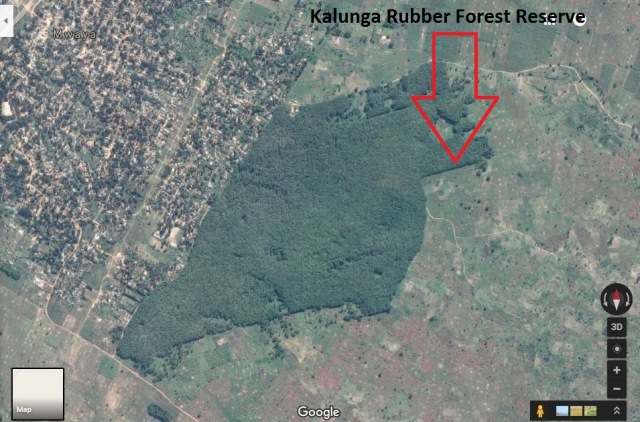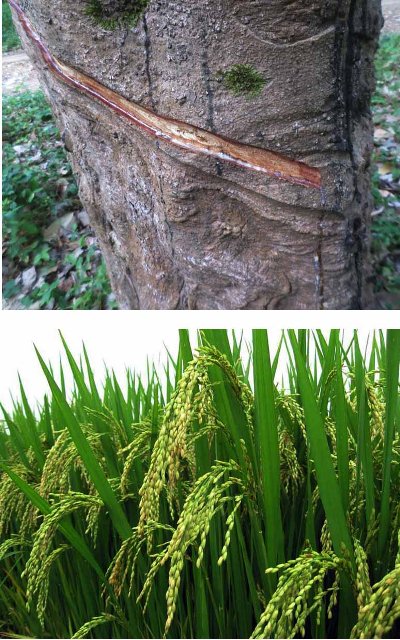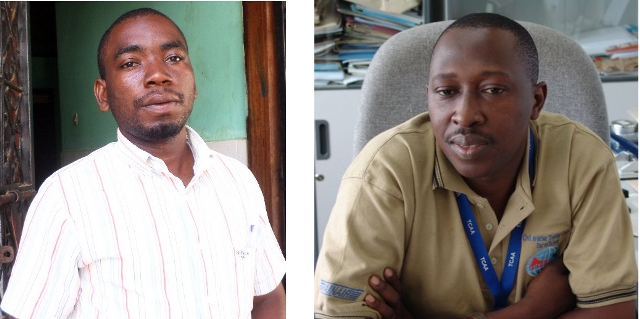By Jaston Binala Recently in Kilombero.
The Tanzania Government faces a challenge to choose between rice and rubber in Kilombero district, Morogoro region.
The Government owns 754 hectors of black, fertile land at Mwaya ward, Mang’ula Division in the district. The chunk of land is called Kalunga . The land was first set aside as a natural forest reserve in 1967. It was later transformed into a rubber forest reserve but only 30% of it has been used for that purpose.
“We want to use this area for rice farming,” the Vice Chairman of Kilombero District Council, Adam Bakari Sungura told this website during a recent visit. Mr. Sungura is also the Mwaya Ward Councillor representing his area at district council sittings.
He said farmers living in his area have told him they need part of this land for rice and other agricultural produce to survive, but also because the government is not managing the land properly. He said his people do not see why this land should not be given to them for better use.
Kalunga area was gazetted as a government forest reserve on December 8, 1967 with initial intention being to preserve the natural vegetation to attract rain, to preserve the soil and to protect Colobus monkeys which existed in the area back then.
The Government transformed its intentions in 1980 when it allocated the forest reserve area to General Tyre for planting the tree species Havea biasilliensis which is also called the rubber tree. It was meant to be a source of raw material for General Tyre’s factory in Arusha built to produce vehicle tyres.
But General Tyre returned the forest back to Government in 1995, explaining that rubber production was actually outside their business terms of reference. The company had planted the trees on only 30% of the allocated land area at the time, which exposed the remaining portion to what Abel Ngapemba describes as “invaders.”
Ngapemba is spokesperson for National Development Corporation (NDC), the corporate body incharge of most Government owned industries.
The rubber forest reserve was returned to Government during the heat of privatization. As a result the government entered into contracts with various private sector companies to run the rubber plantation but all of them failed to fulfil their contractual obligations and the plantation was returned back to NDC.
The companies which managed the Kalunga rubber forest at differing times included Mercantile Freighters Company Limited, Jumaan Muhsin El-ardh and Coast Water Limited.
The rubber forest is currently under total government ownership, Ngapemba said, adding that plans were now underway to plant rubber trees on the entire allocated land area. 190,000 seedlings have already been planted at a primary nursery garden and were about ready for transfer to Kalunga.
Mr. Sungura’s administrative area consists of five villages of Mgudeni, Mwaya, Kiswanya, Muhelule and Mikoleko with a joint population of 25,000 inhabitants whom he says have limited farmland to sustain livelihoods. Of the five villages, only three are closer to Kalunga area—the 754 hectors set aside as rubber forest 50 years ago but where only 30% has been utilized. The villages in the vicinity of the forest reserve include Mwaya, Kiswanya and Muhelule. These are the villages which have set up co-operative team to demand part of the forest for rice farming.
Kalunga rubber forest area at Mang’ula sits on the outskirts of Mang’ula township on the eastern foot of the green Udzungwa Mountain forests. The rubber forest area is owned by the Ministry of Industries and Trade through the National Development Corporation (NDC).
Back in Dar es Salaam Abel Ngapemba, the NDC Corporate Affairs Manager, told this website there are no intentions to release this land to farmers. Instead, those who have forcibly started using parts of the rubber forest reverse are going to be evicted.
Mr. Sungura confirmed there are farmers who have been using the unplanted section of the government land for years without a bother. The petition to ask for permanent ownership of the farmland was initiated when somebody representing the Government started asking for rent to use the land.
The councillor identified the land rent seekers acting on behalf of the land owner as Mr. Alex Chuwa and Mr. Godfrey Ntekele. They ask for Tsh. 50,000/- per acre per year for permission to farm rice at an area away from a water source, and Tsh. 60,000/- per acre per year to farm near the river bank.
“I have formed the Kalunga farmers union to demand the right to own this farming area,” Mr. Sungura said.
But the land will not be given, Mr. Ngapemba told this website. Management of the 754 hectors is under the NDC, he said, adding that plans are underway to plant rubber trees on the entire reserved land, he said. The farmers just have to leave.
This is in a way a very difficult choice between rice and rubber. One official at the NDC told this website rubber is a hot cake in the market. The NDC currently produces some rubber at the Kalunga forest but the production is not able to satisfy even a fraction of the demand, the official said. Bora Shoes needs rubber, Tegri Plastics need the rubber, General Tyre is soon going to start operating, and they will need rubber, and there are shoe producers in Kenya who need rubber.
All these companies in need of rubber have resorted to importing the raw material from outside the country, the official said. NDC has a reason to operate the rubber forest at Kalunga and other places. And there are other places, he said.
This article was produced with a reporting grant provided by the China-Africa Reporting Project to the Tanzanian Journalist Jaston Binala.






